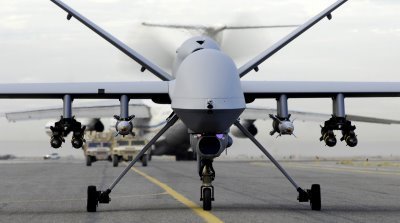Medical Surgical Robots
With the four mobile arms that that are able to rotate, change and grasp at a great range of motion, along with enhanced vision which can see inside the human body, the da Vinci Surgical System robot is becoming a quick hit among hospitals, doctors and patients, as better results and decreased risk come about from the tremendous robotic surgeon.
When you first look at the complex robotic da Vinci Surgical System you may think of a science-fiction movie – demolishing everything in sight – but the state-of-the art technology is providing high-level health care for patients at Jeff Anderson Regional Medical Center.
"It provides our surgeons an alternative to both traditional open surgery and conventional laparoscopy," said John G. Anderson, vice president of JARMC.
"This is a tremendous technology, which provides minimally invasive surgical technology for the patient."
The surgical system empowers surgeons to perform procedures through incisions that are as small as 1 to 2 centimeters with a greater range of motion and increased precision.
Although available at the Meridian hospital since July 1, the surgical system was introduced to JARMC staff Monday during an open house
High-definition brings a lot to the surgeon – he sees his surgical sight so much clearer, magnified by 10 times, but it's high-definition.
The surgical system is currently used for two primary procedures at JARMC: prostatectomy in men, and hysterectomy in women.
"Virtually 80 percent of all prostatectomies in the United States are done by robotics now," Anderson said. "And from a female perspective, laparoscopic hysterectomy is done under robotics."
Not only is robotic surgery popular among physicians, but patients are not only requesting, but in many cases - demanding robotic surgery.
It's a very consumer-driven technology. And hospitals have responded to that demand from both surgeon and patient.
Since its introduction at JARMC, response has been positive – from patients and surgeons, hospital officials said.
"Because of the smaller incision site, there is considerably less loss of blood and then patient recovery is much quicker," Anderson said. "And in many cases, patient outcome is better ... they are able to go home quicker. It's cutting their length of stay down by half.
"We've had a number of physicians that have undergone specialized training and have done a number of cases since July 1."
The robotic surgery may also be used for other surgical procedures, including colorectal, bariatric procedures, as well as some heart surgery procedures. Anderson said these procedures will be added at JARMC, as more surgeons go through the training process.
Medical Surgical Robots
Tuesday, July 21, 2009
Subscribe to:
Post Comments (Atom)

No comments:
Post a Comment